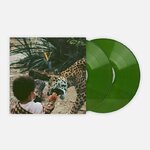Skalap
Well-Known Member


Honky Château (50th Anniversary Edition)
The reissue of Elton John's 'Honky Château' is available on exclusive Cream in Beige A-Side/B-aside vinyl.www.vinylmeplease.com
This album was recorded at Chateau d'Hérouville, 15min from where I live. This place is legendary for many reasons and I strongly recommend reading it's story and Michel Magne, who built the recording studios.

L'Incroyable histoire du Château d'Hérouville: le plus rock'n'roll des châteaux - Rock&folk
Le Château d'Hérouville ou le premier studio résidentiel.Lieu mythique des années 70 et 80, qui a accueillis les plus grandes stars du rock.
Here is a short list of albums recorded at Chateau d'Hérouville, there are many others, both French and international albums :
Elton John : Honky Château (1972)
Pink Floyd : Obscured by Clouds (1972)
T. Rex : The Slider (1972)
T. Rex : Tanx (1972)
Canned Heat et Memphis Slim : Memphis Heat (1973)
Elton John : Don't Shoot Me I'm Only the Piano Player (1973)
Elton John : Goodbye Yellow Brick Road (1973)
Uriah Heep : Sweet freedom (1973)
David Bowie : Pin Ups (1974)
David Bowie : Low (1976)
Bee Gees : Saturday Night Fever (1977)
Iggy Pop : The Idiot (1977)
Rainbow : Long Live Rock 'n' Roll (1978)
Fleetwood Mac : Mirage (1982)
On a personal note, some of the most important Portuguese albums from the 70s (pre-revolution) were recorded in this place. At the moment, lot of Portuguese were leaving Portugal for political reasons and of course there were a lot of artists.
During the first years of the studio, in 1971 and 1972, some important records of political Portuguese folk music (Música de Intervenção) were recorded at Château d'Hérouville. These included the seminal record Cantigas do Maio by singer-songwriter José Afonso in 1971. Also in 1971, José Mário Branco recorded his debut album Mudam-se os tempos mudam-se as vontades and Sérgio Godinho recorded Os Sobreviventes. Sérgio Godinho would also record his second album Pré-Histórias at the chateau in 1972.
The anthem of the Carnation Revolution Grandola Vila Morena was recorded there. This song, censored by the PIDE (political police) got played on April 25th on national radio and was the signal for the start of the revolution. The rest is history.

“Grândola, vila morena”: como um erro tecnológico determinou o futuro histórico de uma canção
Testemunho de José Mário Branco publicado no Observatório da Canção de Protesto sobre como foi gravado o som dos passos numa das mais emblemáticas canções portuguesas. O texto acompanhou Grândola, vila morena – Para sempre, José Afonso, CD-livro edi
Those who watched the Spanish serie La Casa del Papel may recognize this song.
Anyway, I may swap for it or buy an OG for 10 bucks.

